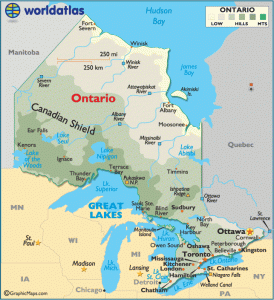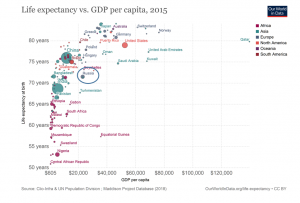Between 2010-2020, alcohol policy liberalization in Ontario has seen the loosening of regulations and restrictions on alcohol access and pricing.
Alcohol is a controlled psychoactive substance that is largely normalized in our society, often served and consumed in a variety of settings and environments, with notable health and social consequences.
Health policy evidence demonstrates that policies and regulations that limit access to alcohol (e.g. through age, timing, and pricing restrictions) is successful in limiting the harmful effects of alcohol on individuals and communities.
In Ontario, initial alcohol policy and regulation liberalization was driven by economic and values-based arguments by the government to provide opportunity and fairness for small businesses and to increase choice for location for alcohol to be served/sold and ease of accessibility for customers.
The COVID-19 pandemic has driven even more significant liberalization with regulations permitting home-based alcohol delivery by both producers and licensed establishments.
Public health and other stakeholder input play an important role in policy decisions around alcohol that impact communities; previous engagements in Ontario’s liberalization have been limited and will become even more critical in the post-pandemic recovery phase

credit: Worldatlas
Economic Growth, Accessibility, and COVID-19: a Policy Analysis Examining a Decade of Greater Alcohol Liberalization in Ontario
By Yipeng Ge1, Elspeth McTavish2, Rohit Vijh3, Lawrence Loh4
1University of Ottawa Faculty of Medicine School of Epidemiology and Public Health, Public Health and Preventive Medicine Residency Program; 600 Peter Morand Crescent, Room 101, Ottawa, Ontario K1G 5Z3; Yipeng.ge@uottawa.ca
2University of Toronto, Dalla Lana School of Public Health, 155 College Street, Toronto, ON, M5T 3M7; e.mctavish@mail.utoronto.ca
3University of British Columbia, School of Population and Public Health, Public Health and Preventive Medicine Residency Program, 2206 East Mall, Vancouver, BC, V6T 1Z3; rohit.vijh@alumni.ubc.ca
4University of Toronto, Dalla Lana School of Public Health, 155 College Street, Toronto, ON, M5T 3M7; lawrence.loh@peelregion.ca
Corresponding author: Yipeng Ge Yipeng.ge@uottawa.ca
Introduction
Over the past ten years, the Canadian province of Ontario has seen significant alcohol policy liberalization, including the expansion of alcohol sales into grocery stores, fewer restrictions on alcohol marketing and advertising, and lowering the minimum price of alcohol. The COVID-19 pandemic led to even more significant opening of the sector with home deliveries from producers and licenced establishments.
This policy analysis examines peer-reviewed and grey literature identified through a literature search and analyzed using the 3-I framework (ideas, interests, and institutions). The paper summarizes timelines for Ontario’s alcohol liberalization, analyzing context and the role of health in policy decision-making.
Pre-pandemic policy changes did not comprehensively explore potential public health impacts in moving towards liberalization. The means for public health experts to provide input appeared largely absent despite recommendations for consultation in considering the expansion of alcohol access and privatization. Decisions seen in the COVID-19 pandemic confirm the predominant driver has appeared to be economic value and sustaining government and small business revenues, as well as increased autonomy and choice for consumers.
Public health evidence is clear that regulating alcohol access, availability, and discouraging normalization of alcohol use is critical to reducing alcohol-related harms in the community. To date, policy decisions in Ontario towards greater liberalization arguably puts Ontario citizens at increased risk of harms. Going forward post-pandemic, public health must play a vital role in revisiting policy decisions around alcohol in aiming to strike a balance between business interests and the long-term health and wellbeing of our communities.
Background
Alcohol consumption is a leading risk factor for death and disability in Canada and worldwide with associations to cancer, stroke, liver disease, spousal and domestic violence, assaults, and motor vehicle collisions from impaired driving (1–3). The 2018 Chief Public Health Officer of Canada report highlighted alcohol as being responsible for the greatest economic and social burden in Canada, driven by its social acceptability and a widespread underappreciation for its associated harms (4). Despite these concerns, per capita sales of alcohol in Canada have steadily continued to rise, with $22.5 billion worth of alcoholic beverages sold in 2017, up 2.3% from the previous year (5).
In Ontario, Canada’s most populous province, the past decade has seen significant liberalization in government alcohol policy, leading to increased availability and access and significant concerns of population health risks associated with alcohol consumption. (6–10)
This policy analysis reviews Ontario’s path to greater alcohol liberalization, examining drivers of change, the involvement of health agencies, and potential policy impacts before proposing future strategies to focus on health in alcohol policy.
Methodology
A literature search of peer-reviewed (using CINAHL, Embase, Medline (Ovid), PubMed databases) and grey literature (using Google search engine, Ontario e-Laws database, Canadian digital media outlets) including news articles was conducted. Of relevant articles identified, the 3-I framework (ideas, interests, and institutions) for public policy analyses was applied to identify themes relevant to each section of the framework.
Ontario’s Changing Alcohol Landscape
In Ontario, alcohol sales are provincially regulated by the Liquor Control Act (1990) and Liquor License Act (1990), and operate within a mixed private and public retail system. The Liquor Control Act (1990) specifies where alcohol can be sold, sets a minimum price, and created the Liquor Control Board of Ontario (LCBO). LCBO is a Crown corporation that sells liquor through LCBO stores. Other venues include The Beer Store (TBS), operated by Brewers Retail Inc., a company owned by three foreign-owner brewers (Molson, Labatt, Sleeman), and winery retail stores that are owned and operated by six Ontario wineries. The Alcohol and Gaming Commission of Ontario (AGCO) is responsible for regulating the Liquor License Act (1990) and specific sections of the Liquor Control Act (1990) pertaining to the sale and service of alcohol in liquor sales license settings such as, craft brewery locations, bars and restaurants (15).
In April 2014, the Minister of Finance announced the Premier’s Advisory Council on Government Assets to advise the Premier on how best to maximize the economic value and performance of government business enterprises and Provincial assets. This led to two reports in 2015 and 2016, published by the Council, which presented recommendations for 450 grocery stores to sell beer, wine and spirits, and for the LCBO to begin selling a wider variety of products through more accessible means (18,19). This paved the way for revised alcohol sales regulations that allowed grocery stores to start selling beer, wine, and cider—an increase in 25% of stores where alcohol could be purchased (20,21) and the launch of an LCBO e-commerce platform (22).
Further liberalization occurred following a change of government in 2018, with commitments to allow alcohol sales in corner stores, a decrease in the minimum price of beer (‘buck-a-beer’), cancelled automatic increases in beer prices and lengthening of weekly hours of sale at the LCBO and TBS. (23,24) This continued in 2019 with changes to the Liquor License Act (1990) to permit extended hours for the sale and service of alcohol, loosening previous marketing restrictions for ‘happy hour’, opening up municipal choice for designating public areas for alcohol consumption, and allowing tailgate events (7).
In 2020, the COVID-19 pandemic resulted in significant business closures to bring the disease under control in Ontario communities. During these closures, alcohol distribution was deemed an essential service and licenced establishments and producers were permitted under emergency regulations to deliver alcohol directly to consumers at their home. The AGCO permitted newly allowed licensed liquor delivery services to contract out work to freelance drivers and boat operators with liquor licences to sell and serve beer, wine, and spirits while docked. These changes offered unprecedented access and were seen favourably by many Ontarians (25).
What Interests Played a Role?
Economic interests have driven many government decisions around alcohol, up to and including emergency decisions taken during the COVID-19 pandemic. Government agenda appears to be responsive to decreasing support for alcohol control policies in Ontario among the general public (16) and lobbying from craft and artisanal brewing companies to dismantle the former TBS/LCBO economic monopoly (17).
A May 2019 report to the Minister of Finance, the Ontario Special Advisor for the Beverage Alcohol Review addressed liberalization largely from an economic perspective for small businesses and breweries/wineries and an autonomy perspective for the individual. This perspective aligned with positions advanced by The Retail Council of Canada and The Convenience Industry Council of Canada in ‘building a system that’s fair for everyday Ontarians” (30). While the report mentions certain health and safety provisions, including calls for socially responsible beverage alcohol retail and a recommendation to work with public health experts to ensure that increasing convenience does not lead to increased societal costs, the broader implications on public health were not clearly stated.
Similarly, primary stakeholders consulted in the production of the Premier’s Advisory Council on Government Assets reports included the business entities involved, relevant ministers and representatives from various sector unions. Input from healthcare and public health stakeholders was notably absent from these reports, despite the efforts of civil society groups and public health agencies to advocate for careful consideration and mitigation of negative health impacts associated with greater liberalization. (28,29) (31,32).
What Ideas Played a Role?
Public ideas reported by the Wynne government cited increasing choice for consumers to purchase alcohol at convenient locations and increasing business opportunity for small business (breweries and wineries), along with a dissatisfaction with the 2015 Master Service Agreement that had been signed by the previous government with Molson, Labatt, and Sleeman. The argument for privatization in favour of competition for driving down prices and increasing options was also shared by the president of the Alberta Liquor Store Association (34).
The value of autonomy and independence of the consumer’s role in alcohol access and self-control was also expressed through a desire to ‘treat adults as adults’. Healthcare services research has shown that liberalization measures in 2015 (increased hours of operation and number of alcohol outlets available) were associated with increased emergency department visits tied to alcohol, particularly among women and younger adults (9,10). Despite this, public support for liberalization has also grown over time (35), and other popular ideas include a willingness to pursue convenience store expansion provided it is conducted in a safe and regimented manner. This perspective draws on lessons from the Registrar’s Standards for Cannabis Retail Stores, recognizing if changes are inevitable, that harms are mitigated as best as possible with available evidence and tools.
What Institutions Played a Role?
When it comes to the institutions, the formal and informal rules, norms, precedents, and organizational factors that structure political behaviour, it is clear that the topic of convenient access to inexpensive alcohol appears to be one of few bipartisan issues left in Ontario (21).
To some extent, the province also experiences a conflict of interest in that expansion of alcohol vendors and ownership of the LCBO/TBS generates significant tax revenues, even though the costs of alcohol consumption may be higher than that of financial benefit to the province. A government-run and regulated alcohol distribution model (LCBO/TBS) provided an avenue for small business owners (e.g. craft breweries) to argue for increased consumer choice in product and consumer convenience in where to purchase alcohol. The LCBO as an institution is a policy legacy from the end of prohibition in 1927, which was a drastically paternalistic policy contrast to current norms. This meant that the continual erosion of public trust in public institutions and perceived paternalistic policies may have set this topic up as both favourable for political behaviour and public buy-in.
Most recently, COVID-19 saw additional alcohol liberalization as an unintended consequence of broader government-led efforts to reduce interactions and control the spread of the deadly virus. This saw the declaration of alcohol sales and distribution an essential service in recognizing the potential burden that a withdrawal of service might present an additional burden to the hospital and healthcare sector. The delivery of alcohol by licenced establishments and producers was also used by government to provide additional revenue streams to those economic sectors and allow consumers to access products while adhering to physical distancing and isolation requirements in the short-term. This has led to the creation of a new societal norm legitimized by government that will importantly require revisiting once the pandemic is brought under control.
Discussion
Taken together, this 3-I analysis suggests that the Ontario context had recently become primed for alcohol policy reform, with a focus on economic value and efficiency for the Ontario government and small businesses and increased autonomy and choice for individuals. Impacts to public health were not at the forefront in the rationale for these policy changes and means for public health experts to provide input appeared largely absent despite recommendations to do so in work that recommended expanding alcohol access and privatization.
Public health evidence shows that limiting harms from alcohol depends on limiting alcohol access and availability and discouraging normalization of alcohol use (6,8). Centralized government interventions, such as control over manufacturing, retailing and licensing of alcohol, limits on the number and density of alcohol outlets and their hours of operation, and diligently trained staff enforcing legal requirements (i.e. minimum age of purchase) have been shown to have the greatest impact (5). Additional interventions include optimizing taxes and a minimum price of alcohol, strict regulation and enforcement of impaired driving, marketing restrictions, and greater resources, access and linkages to medical interventions for alcohol use disorder (36).
Noted alcohol policy changes in Ontario are likely to lead to broad unintended effects associated with greater alcohol availability and access. There is potential to exacerbate health inequities; evidence shows, for example, that individuals living in lower income neighborhoods are most likely to experience higher rates of hospitalizations due to alcohol compared to those living in higher income neighborhoods (8,37). Without accompanying policies to mitigate and restrict availability and access, increased liberalization may lead to population health harms that will outweigh economic gains. (21,30).
Recommendations from “The Case for Change: Increasing Choice and Expanding Opportunity in Ontario’s Alcohol Sector” now include that the government’s proposed retail alcohol expansion workplan includes consulting with public health experts so that social responsibility and health and wellbeing of citizens are taken into account and protected, and harms from alcohol consumption mitigated (30). This is crucial and necessary to forestall and mitigate the harms associated with alcohol consumption in an environment where the product is increasingly available, particularly during the COVID-19 pandemic, and even more socially accepted than before.
Increased access to alcohol from online sales and delivery services, in concert with the impacts of the COVID-19 pandemic (quarantine measures, individual financial and psychological stress) will likely increase the negative effects of alcohol and there may be a corresponding spike in both incidence and prevalence of alcohol use disorder and alcohol-associated liver disease (38–40). The COVID-19 pandemic response measures including a post-pandemic recovery plan ought to incorporate supporting, treating, and preventing substance use disorders, including the impact of alcohol consumption.
Conclusion
Since 2014, Ontario has increasingly liberalized provincial alcohol policies; however, the extent to which there was input and involvement from public health experts and healthcare services perspectives was limited. Many of the decisions taken run contrary to commonly accepted evidence including the calls to action the 2018 Chief Public Health Officer of Canada report.
Public health agencies and units must be involved in policymaking and consultations whenever possible and must continue to monitor and analyse the impact of alcohol liberalization. Economic analysis of the costs of health and social impact versus economic gains from these recent policy changes would also assist in alcohol policy reform. An understanding of the impacts of policies on access, availability, and normalization on cannabis access will also inform alcohol policy reform. The reversal of any policies leading to accessibility prior to and during the COVID-19 pandemic will be more challenged by the transformation of many of these changes into the status quo.
Contributions
All authors were involved in the manuscript drafting and editing process, with initial iterations of the manuscript and analyses developed by EM and RV, and additional revisions and analyses added by YG. The conception of the research question including guidance and supervision with the manuscript preparation was provided by LL. There was no source of funding for this work.
References
- Griswold MG, Fullman N, Hawley C, Arian N, Zimsen SRM, Tymeson HD, et al. Alcohol use and burden for 195 countries and territories, 1990-2016: A systematic analysis for the Global Burden of Disease Study 2016. Lancet [Internet]. 2018 Sep 22 [cited 2020 Mar 1];392(10152):1015–35. Available from: https://linkinghub.elsevier.com/retrieve/pii/S0140673618313102
- World Health Organization. Global status report on alcohol and health 2018 [Internet]. 2018 [cited 2020 Mar 1]. Available from: https://apps.who.int/iris/bitstream/handle/10665/274603/9789241565639-eng.pdf?ua=1
- Chief Public Health Officer’s Office. The Chief Public Health Officer’s Report on the State of Public Health in Canada, 2015: Alcohol Consumption in Canada – Canada.ca [Internet]. 2015 [cited 2020 Mar 1]. Available from: https://www.canada.ca/en/public-health/services/publications/chief-public-health-officer-reports-state-public-health-canada/2015-alcohol-consumption-canada.html
- Public Health Agency of Canada. THE CHIEF PUBLIC HEALTH OFFICER’S REPORT ON THE STATE OF PUBLIC HEALTH IN CANADA 2018 [Internet]. 2018. 2018 [cited 2020 Mar 1]. Available from: https://www.canada.ca/content/dam/phac-aspc/documents/corporate/publications/chief-public-health-officer-reports-state-public-health-canada/2018-preventing-problematic-substance-use-youth/2018-preventing-problematic-substance-use-youth.pdf
- Statistics Canada. The Daily — Control and sale of alcoholic beverages, year ending March 31, 2017 [Internet]. 2018 [cited 2020 Mar 1]. Available from: https://www150.statcan.gc.ca/n1/daily-quotidien/180510/dq180510a-eng.htm
- iPolitics. Morning Brief: Ontario looks to further liberalize provincial liquor laws – iPolitics [Internet]. 2019 [cited 2020 Mar 1]. Available from: https://ipolitics.ca/2019/10/29/morning-brief-ontario-looks-to-further-liberalize-provincial-liquor-laws/?lp_txn_id=947877
- Alcohol and Gaming Commission of Ontario. Liquor Reforms in Ontario: Frequently Asked Questions [Internet]. 2019 [cited 2020 Mar 3]. Available from: https://www.agco.ca/may-2019-liquor-reforms-ontario-frequently-asked-questions
- Vingilis E, McLeod AI, Stoduto G, Seeley J, Mann RE. Impact of extended drinking hours in Ontario on motor-vehicle collision and non-motor-vehicle collision injuries. J Stud Alcohol Drugs. 2007;68(6):905–11.
- Myran DT, Chen JT, Giesbrecht N, Rees VW. The association between alcohol access and alcohol-attributable emergency department visits in Ontario, Canada. Addiction [Internet]. 2019 Jul 1 [cited 2020 Mar 1];114(7):1183–91. Available from: https://onlinelibrary.wiley.com/doi/abs/10.1111/add.14597
- Myran DT, Hsu AT, Smith G, Tanuseputro P. Rates of emergency department visits attributable to alcohol use in Ontario from 2003 to 2016: A retrospective population-level study. CMAJ. 2019 Jul 22;191(29):E804–10.
- Giesbrecht N, Wettlaufer A, Simpson S, April N, Asbridge M, Cukier S, et al. Strategies to reduce alcohol-related harms and costs in Canada: A comparison of provincial policies. Int J Alcohol Drug Res. 2016 Jul 19;5(2):33.
- Martineau F, Tyner E, Lorenc T, Petticrew M, Lock K. Population-level interventions to reduce alcohol-related harm: An overview of systematic reviews [Internet]. Vol. 57, Preventive Medicine. 2013 [cited 2020 Mar 1]. p. 278–96. Available from: http://www.ncbi.nlm.nih.gov/pubmed/23811528
- Burton R, Henn C, Lavoie D, O’Connor R, Perkins C, Sweeney K, et al. A rapid evidence review of the effectiveness and cost-effectiveness of alcohol control policies: an English perspective [Internet]. Vol. 389, The Lancet. Lancet Publishing Group; 2017 [cited 2020 Mar 1]. p. 1558–80. Available from: http://www.ncbi.nlm.nih.gov/pubmed/27919442
- Gauvin F-P. Understanding policy developments and choices through the “3-i” framework: Interests, Ideas and Institutions [Internet]. National Collaborating Centre for Healthy Public Policy. 2014. Available from: http://www.ncchpp.ca/165/publications.ccnpps?id_article=1077
- Government of Ontario. Archived – Initial Report: The Premier’s Advisory Council on Government Assets [Internet]. 2019 [cited 2020 Mar 1]. Available from: https://www.ontario.ca/page/initial-report-premiers-advisory-council-government-assets
- Ialomiteanu AR, Giesbrecht N, Adlaf EM, Wettlaufer A. Trends in public opinion on alcohol issues during a period of increasing access to alcohol: Ontario, Canada, 1996-2011. Drug Alcohol Rev [Internet]. 2014 May [cited 2020 Mar 1];33(3):249–58. Available from: http://www.ncbi.nlm.nih.gov/pubmed/24761757
- Morrow A. Toronto entrepreneur to challenge Beer Store’s monopoly with lawsuit – The Globe and Mail [Internet]. 2015 [cited 2020 Mar 1]. Available from: https://www.theglobeandmail.com/news/politics/toronto-entrepreneur-to-challenge-beer-stores-monopoly/article22442315/
- Government of Ontario. Archived – Modernizing beer retailing and distribution [Internet]. 2019 [cited 2020 Mar 1]. Available from: https://www.ontario.ca/page/modernizing-beer-retailing-and-distribution
- Government of Ontario. Archived – Striking the Right Balance: Modernizing Wine and Spirits Retailing and Distribution in Ontario [Internet]. 2019 [cited 2020 Mar 1]. Available from: https://www.ontario.ca/page/striking-right-balance-modernizing-wine-and-spirits-retailing-and-distribution-ontario
- Government of Ontario. Alcohol sales in retail stores | Ontario.ca [Internet]. 2020 [cited 2020 Mar 1]. Available from: https://www.ontario.ca/page/alcohol-sales-in-retail-stores
- Myran D. Opinion: Ontario has an alcohol crisis – and the government is making it worse – The Globe and Mail [Internet]. 2019 [cited 2020 Mar 1]. Available from: https://www.theglobeandmail.com/opinion/article-ontario-has-an-alcohol-crisis-and-the-government-is-making-it-worse/
- LCBO. BACKGROUNDER: LCBO LAUNCHES E-COMMERCE SITE [Internet]. 2016 [cited 2020 Mar 1]. Available from: https://www.lcbo.com/content/lcbo/en/corporate-pages/about/media-centre/news/2016-07-26.html
- Office of the Premier. Premier Doug Ford Announces Return of “Buck-a-Beer” to Ontario | Ontario Newsroom [Internet]. 2018 [cited 2020 Sep 13]. Available from: https://news.ontario.ca/en/release/49847/premier-doug-ford-announces-return-of-buck-a-beer-to-ontario
- CBC News. Ford government extends hours at LCBO, Beer Store, licensed grocers starting Sunday [Internet]. 2018 [cited 2020 Sep 13]. Available from: https://www.cbc.ca/news/canada/toronto/extended-liquor-sale-hours-in-ontario-1.4929436
- Benzie R. Premier Doug Ford further relaxes alcohol laws as campaign swing hits southwestern Ontario [Internet]. Toronto Start. 2020. Available from: https://www.thestar.com/politics/provincial/2020/07/16/premier-doug-ford-further-relaxes-alcohol-laws-as-campaign-swing-hits-southwestern-ontario.html
- Hall PA, Taylor RCR. Political Science and the Three New Institutionalisms. Polit Stud [Internet]. 1996 Dec 24 [cited 2020 Mar 1];44(5):936–57. Available from: http://journals.sagepub.com/doi/10.1111/j.1467-9248.1996.tb00343.x
- Hall PA. The Role of Interests, Institutions, and Ideas in the Comparative Political Economy of the Industrialized Nations. In: Lichbach MI, Zuckerman AS, editors. Comparative politics : rationality, culture, and structure [Internet]. Cambridge: Cambridge University Press; 1996 [cited 2020 Mar 1]. p. 174–207. (Brown University: Watson Institute for International Studies; Comparative politics). Available from: https://www.tib.eu/en/search/id/BLCP%3ACN024701327/The-Role-of-Interests-Institutions-and-Ideas-in/
- MADD. Provincial Liquor Boards: Meeting The Best Interests of Canadians . 2014.
- Centre for Addiction and Mental Health. ALCOHOL POLICY FRAMEWORK [Internet]. 2019 [cited 2020 Mar 1]. Available from: www.camh.ca/fr
- Government of Ontario. The Case for Change: Increasing Choice and Expanding Opportunity in Ontario’s Alcohol Sector [Internet]. 2019 [cited 2020 Mar 1]. Available from: https://www.fin.gov.on.ca/en/alcohol/report-may2019.html
- Toronto PubIic Health. REPORT FOR ACTION Public Health Implications of the Proposed Increase in Access to Alcohol in Ontario [Internet]. 2019 [cited 2020 Mar 1]. Available from: http://app.toronto.ca/tmmis/viewAgendaItemHistory.do?item=2019.MM3.6
- Liem S, Hutchison M. Alcohol Policy Review: Opportunities for Ontario Municipalities Developed for the Wellington-Dufferin-Guelph Health Unit, Durham Region Health Department and Thunder Bay District Health Unit 2018. 2018.
- Government of Ontario. Archived – Initial Report: The Premier’s Advisory Council on Government Assets [Internet]. 2019 [cited 2020 Mar 2]. Available from: https://www.ontario.ca/page/initial-report-premiers-advisory-council-government-assets
- Martinez I. It’s time for Ontario to step into the present and follow Alberta’s lead on booze | National Post [Internet]. 2018 [cited 2020 Mar 2]. Available from: https://nationalpost.com/opinion/its-time-for-ontario-to-step-into-the-present-and-follow-albertas-lead-on-booze
- Abacus Data. Abacus Data | Beyond the LCBO? Broad support for Liberalizing Alcohol Sales in Ontario [Internet]. 2019 [cited 2020 Mar 2]. Available from: https://abacusdata.ca/beyond-the-lcbo-broad-support-for-liberalizing-alcohol-sales-in-ontario/
- Canadian Institute for Health Information. Alcohol Harm in Canada Examining Hospitalizations Entirely Caused by Alcohol and Strategies to Reduce Alcohol Harm [Internet]. 2017 [cited 2020 Mar 1]. Available from: www.cihi.ca
- Lumsden K. New Alcohol Policies in Ontario Will Lead to Increased Harm -CSSDP [Internet]. 2017 [cited 2020 Mar 2]. Available from: https://cssdp.org/alcohol-policy-ontario/
- Rodriguez LM, Litt DM, Stewart SH. Drinking to cope with the pandemic: The unique associations of COVID-19-related perceived threat and psychological distress to drinking behaviors in American men and women. Addict Behav. 2020 Nov 1;110.
- Da BL, Im GY, Schiano TD. COVID‐19 Hangover: A Rising Tide of Alcohol Use Disorder and Alcohol‐Associated Liver Disease. Hepatology [Internet]. 2020 May 5 [cited 2020 Sep 7];hep.31307. Available from: https://onlinelibrary.wiley.com/doi/abs/10.1002/hep.31307
- Rehm J, Kilian C, Ferreira‐Borges C, Jernigan D, Monteiro M, Parry CDH, et al. Alcohol use in times of the COVID 19: Implications for monitoring and policy. Drug Alcohol Rev [Internet]. 2020 May 2 [cited 2020 Sep 7];39(4):301–4. Available from: https://onlinelibrary.wiley.com/doi/abs/10.1111/dar.13074












